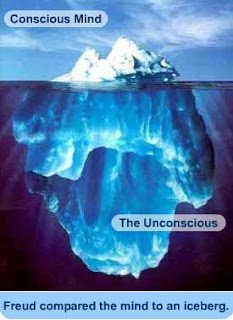Week 8: NanoTech + Art
27 May 2018
 |
| The World Beneath A Nanostructure |
This week we talked about how nanotechnology is on the precipice of amazing insights into both art and science. Professor Vesna highlighted how nanotechnology research and artistic endeavors are going to “push us over the edge into the 21st century” (Vesna 2012). Jim Gimzewski is a professor at UCLA and works at one of the largest nanotechnology research locations in the world. I thought he brought up a very interesting point in his paper that most scientists try to help others understand the research being done in the field using abstract analogies. This is necessary because nanotechnology is such a complex field of study, and people need tangible comparisons, like the width of a human hair, to grasp the most basic of concepts (Grimzewski).
 |
| Nanoscale Cell Imaging |
Most images created about nanotechnology also have to be fabricated and reimagined, due to the limitations of sizing and picture quality. When viewing these microscopic recreations, you can really understand the artistry of the research being done in this field. These scientists need a keen eye and a strong imagination to make the nanoscale seem fascinating for educational and research purposes. Particular colors and designs are also highlighted on this small scale, and these choices will help highlight certain aspects of the micro-engineering being accomplished. There are also wonderful abstractions being done with micro-images. Christian Orfescu is a trained material scientist who uses nanotechnology to improve lithium batteries and also sells abstract paintings demonstrating these small concepts and designs. He develops paintings from different materials and they create beautiful differences depending on what he sees in those materials. This work really showcases the link between art and science and is just the beginning to more conceptual crossovers in the future. I hope that it will lead to a future of research and discovery in the field that will ultimately advance the fundamental understanding of life and the universe.
 |
| Christian Orfesco Art Examples |
References
Feder, Barnaby J. “The Art of Nanotech.” The New York Times, The New York Times, 25 Jan. 2008, bits.blogs.nytimes.com/2008/01/25/the-art-of-nanotech/.
Gimzewski, Jim, and Victoria Vesna. “The Nanomeme Syndrome: Blurring of Fact & Fiction in the Construction of a New Science.” The Nanomeme Syndrome: Blurring of Fact & Fiction in the Construction of a New Science, vv.arts.ucla.edu/publications/publications/02-03/JV_nano/JV_nano_artF5VG.htm.
Gimzewski, Jim. “Nanotech Jim pt1.” YouTube, YouTube, 21 May 2012, www.youtube.com/watch?time_continue=52&v=q7jM6-iqzzE.
“John Curtin Gallery.” Art.Base, art.base.co/event/2104-art-in-the-age-of-nanotechnology.
“Nanotechnology Now.” Press Release: Early Tests Find Nanoshell Therapy Effective against Brain Cancer, www.nanotech-now.com/nanotechnology-art-gallery.htm.
Vesna, Victoria. “Nanotech Intro.” YouTube, YouTube, 26 Mar. 2012, www.youtube.com/watch?time_continue=62&v=dZ3y6TkXJ6Y.








